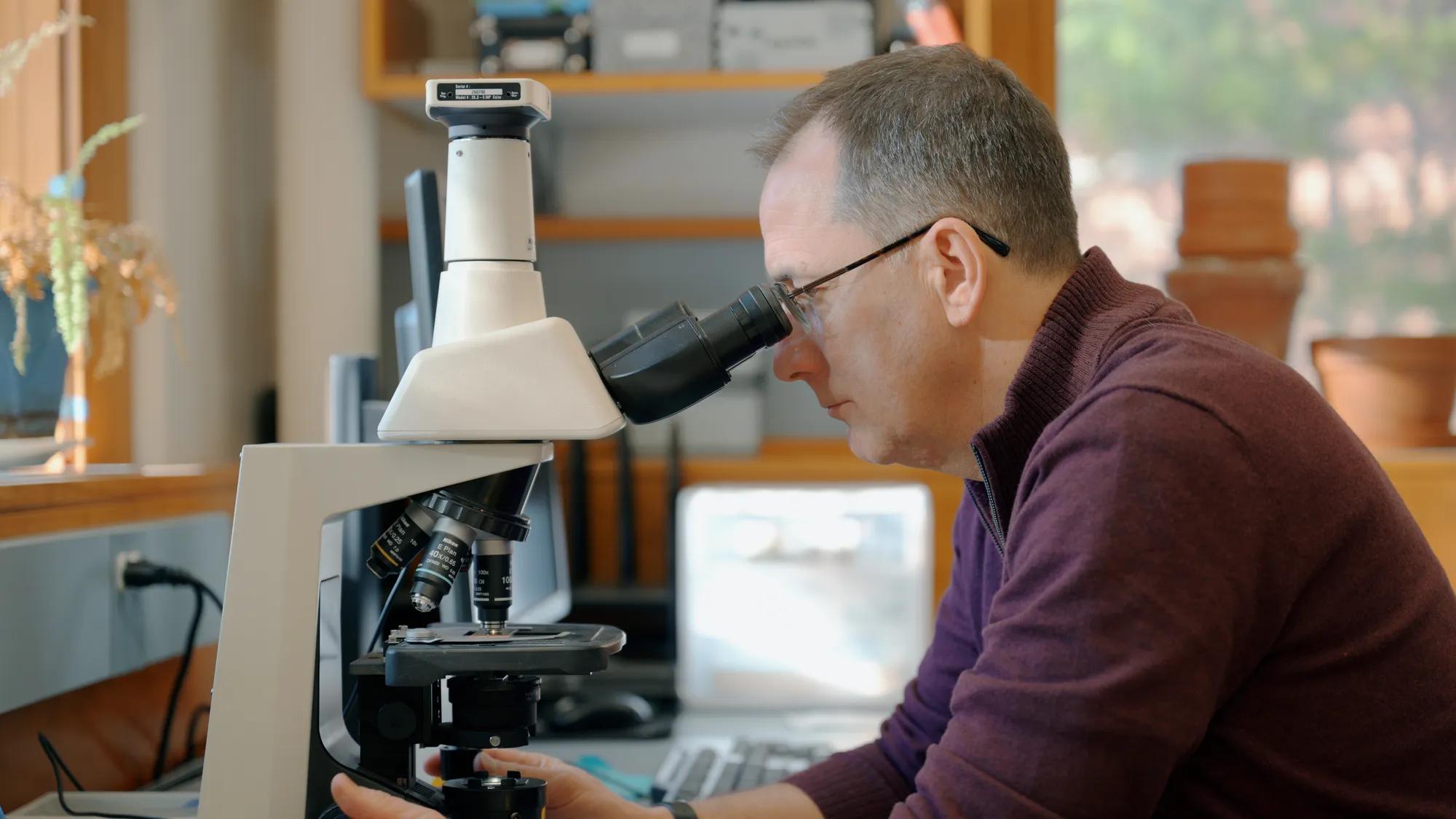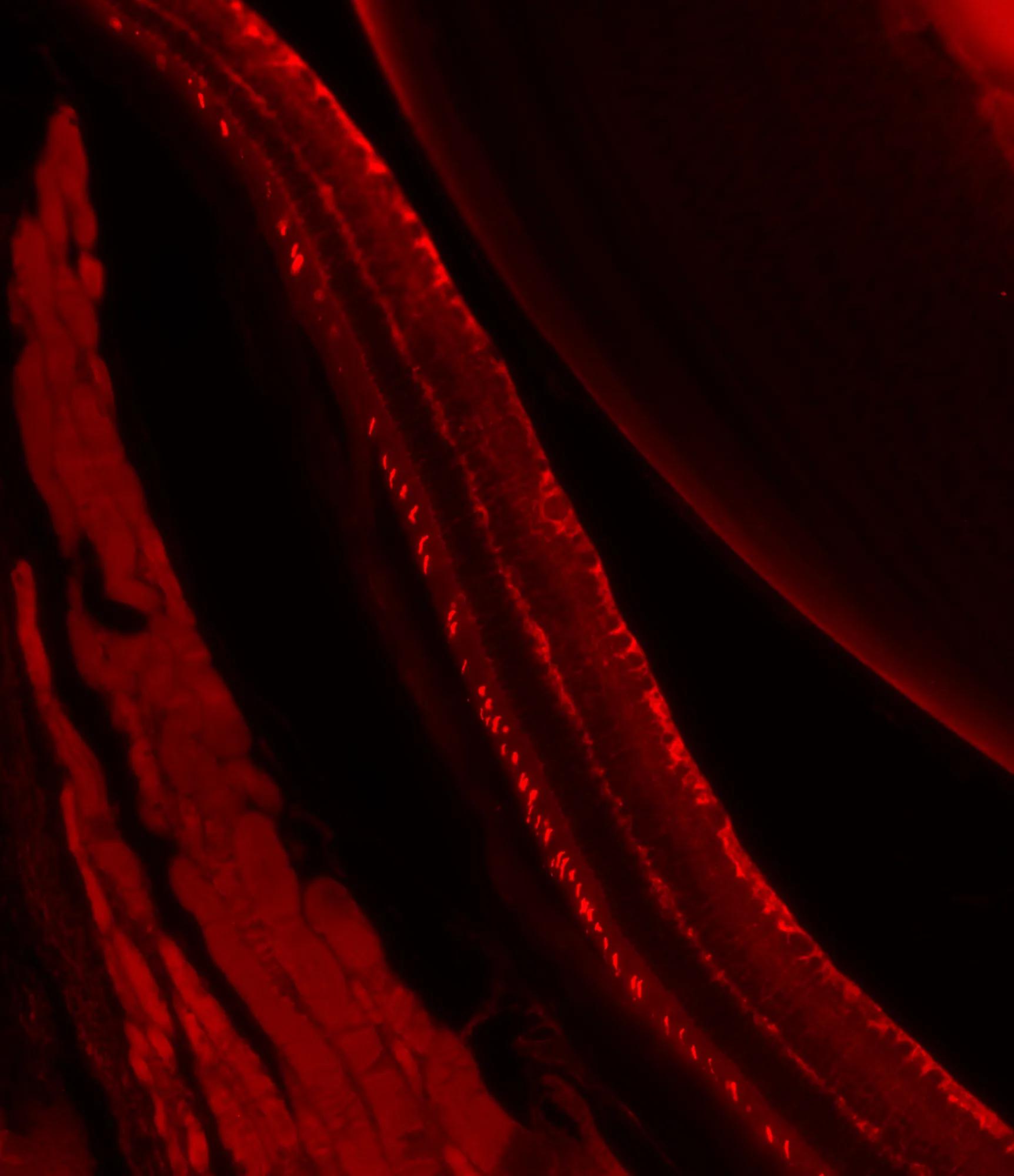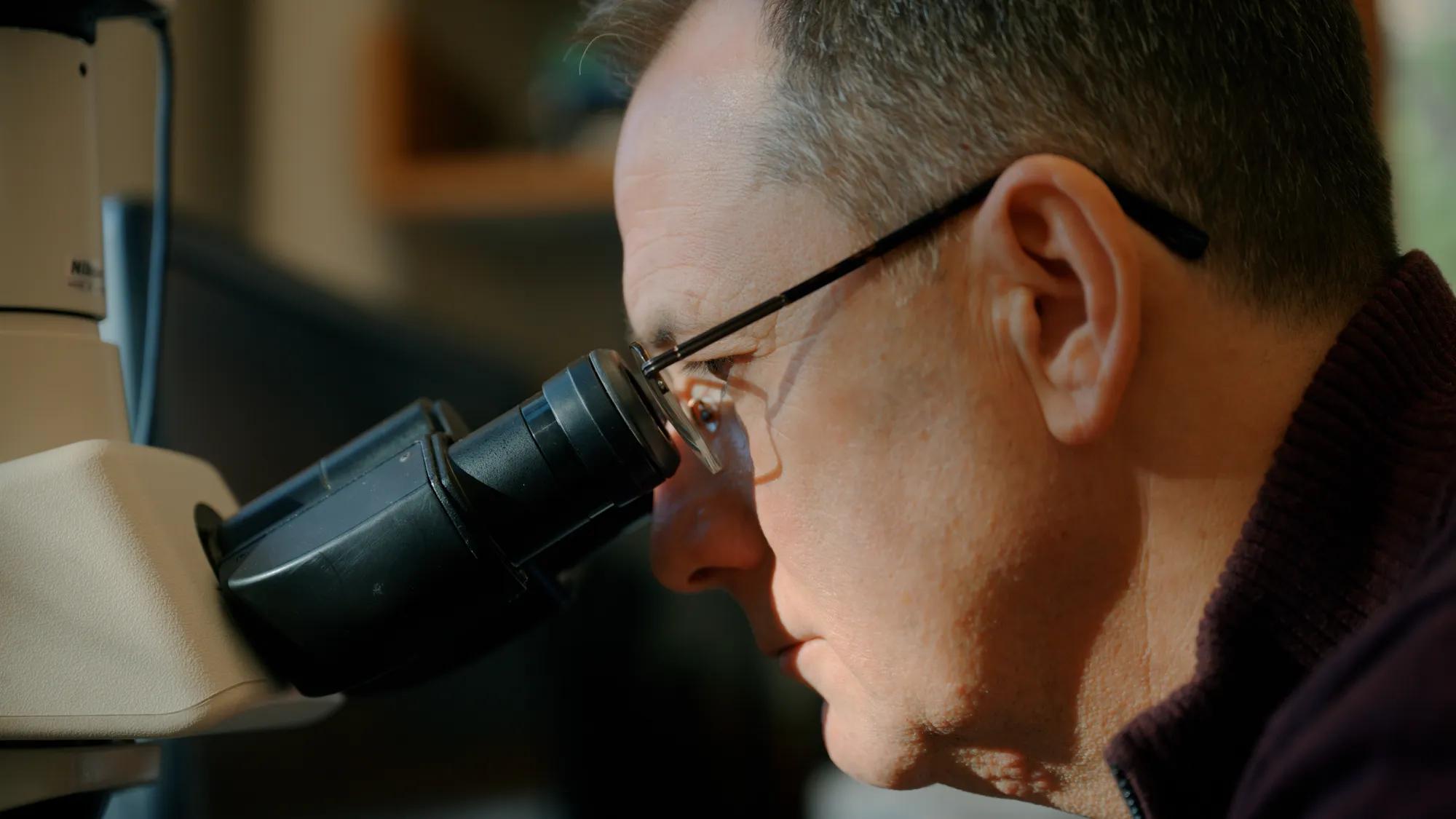The retina may do more than just capture the world around us—it could also reflect what’s happening deep inside the brain. New research from The Jackson Laboratory shows that retinal aging is shaped by genetic differences, and understanding these changes may help scientists detect—and perhaps one day predict—neurological decline, including Alzheimer’s disease.
Published in Molecular Neurodegeneration, the study found that age-related changes in the retina differ widely depending on genetic background. Since the retina is a direct extension of the central nervous system, these findings position the eye as a powerful tool for studying brain aging and neurodegeneration.

“There's more to the eyes than just simply seeing you,” said Gareth Howell, professor and Diana Davis Spencer Foundation Chair for Glaucoma Research at JAX, who led the study. “By understanding how the healthy eye ages in different genetic contexts, we may be able to determine people’s risk of developing diseases like Alzheimer’s.”
The research team examined retinal gene and protein changes in nine genetically diverse strains of mice—an approach that more closely mimics human variation than traditional studies that rely on a single inbred strain. All mice exhibited signs of retinal aging, but the type and severity of changes varied dramatically between strains.
New models for studying eye disease and aging
Two strains, in particular, stood out. The Watkins Star Line B, or WSB, strain developed hallmarks of age-related macular degeneration and retinitis pigmentosa, while the New Zealand Obese, or NZO strain, known for its metabolic dysfunction, developed diabetic retinopathy. In both cases, molecular changes accurately predicted functional degeneration in retinal cells.
These models offer a new, genetically informed way to study how eye diseases develop and progress. They also provide a valuable resource for scientists investigating treatments for macular degeneration, diabetic retinopathy, glaucoma, and other conditions associated with aging.

If it was feasible to go get an eye exam rather than a brain exam, we would have a huge advantage to identify those that were at risk of developing Alzheimer's.”
- Gareth Howell
Beyond the eye: implications for brain health
Because the retina is part of the central nervous system, insights into its aging process may reveal broader truths about neurological health. The publicly available dataset generated by Howell’s team could help researchers across disciplines explore connections between eye and brain aging, ultimately improving early detection and intervention strategies for diseases like Alzheimer’s.
“This research fills an important gap in our understanding of aging,” said Howell. “By leveraging genetic diversity in mouse models, we can better understand the biological mechanisms that underlie age-related vision loss and neurodegeneration—and potentially use the retina as a biomarker for overall brain health.”
Left: Photoreceptors are seen on a retina scan taken at JAX by the Gareth Howell Lab. Right: Stills from the Gareth Howell Lab, 2025.
Learn more

New study uncovers how genes influence retinal aging and brain health
JAX researchers used mice with nine different genetic backgrounds to identify factors influencing eye aging, paving the way for eye-based diagnostics for neurodegenerative diseases
View more
The Howell Lab at The Jackson Laboratory
The Howell Lab at The Jackson Laboratory investigates the early stages of age-related neurodegenerative diseases such as Alzheimer's, dementia, and glaucoma. By combining genetics, genomics, and innovative mouse models, the lab focuses on identifying key mechanisms for therapeutic interventions and enhancing understanding of disease propagation.
View more


